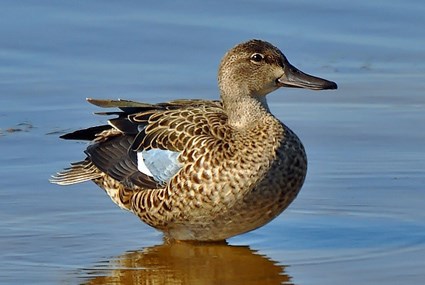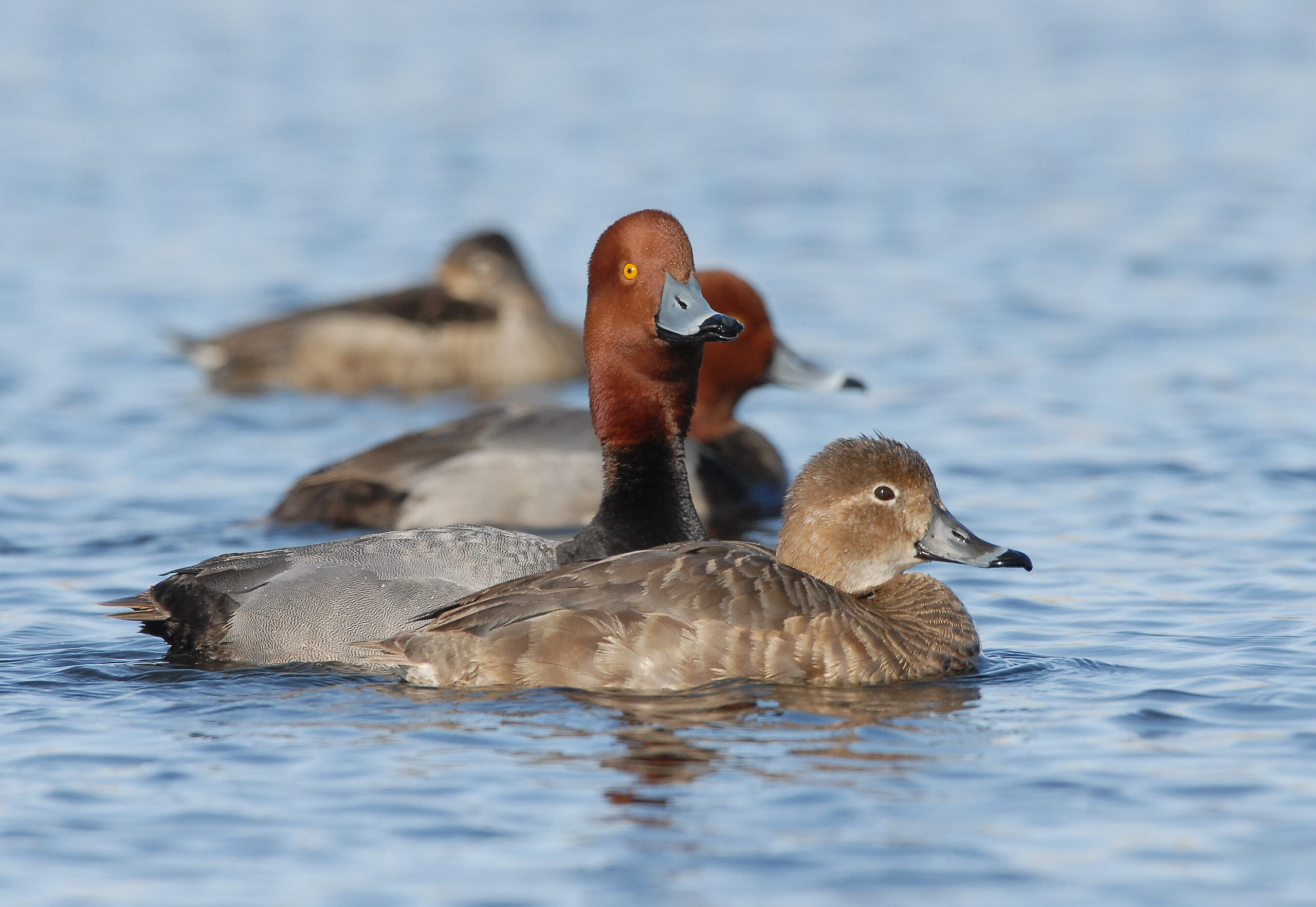
WHAT’S AT STAKE:
WATERFOWL
Bottomland hardwood forests and cypress-tupelo swamps in the upper reaches of the Mississippi River Delta provide habitat for a host of neotropical migratory songbirds, ducks, wading birds and other forested wetland species, including the rapidly declining Rusty Blackbird. The delta’s fresh, brackish and salt marshes are home to terns, wading birds, shorebirds and secretive marsh birds, including Clapper Rails and Seaside Sparrows. The delta’s islands support staggering concentrations of breeding waterbirds, including the Brown Pelican (Louisiana’s state bird), wading birds (herons, egrets, spoonbills, and ibises), terns, gulls and shorebirds.
For millions of birds that traverse the Mississippi Flyway each year, the delta’s food-rich habitats are the last stop before a grueling 500- to 600-mile nonstop flight across the Gulf of Mexico in the fall — or conversely in the spring, a desperately needed refuge for hungry and exhausted birds returning north across the Gulf. The collapse of the delta threatens not only its year-round residents, but also some of North America’s most colorful and iconic backyard birds and other species — birds whose lives quite literally span the hemisphere, from the high Arctic tundra to Tierra del Fuego.
For waterfowl hunters up and down the Mississippi and Central flyways, Louisiana’s warm marshes are critical to the ducks, geese and other waterfowl they grow and hunt in their home states.
-

Blue-Winged Teal
These early migrants to the Gulf Coast begin arriving in early August, and many don’t depart for their northern breeding grounds until April. Due to high numbers (6 million bird average), a special September season and liberal limits, the blue-winged teal is a favorite of coastal hunters. Despite their September eclipse plumage, blue-winged teal are easily recognizable in flight due to the flash of their blue-gray wing coverts. Blue-wings decoy well and respond readily to a call
- Habitat: Their preferred habitat is shallowly flooded wetlands where they feed on small seeds, algae, duckweeds, pondweeds and grasses.
- Interesting Fact: According to the U.S. Fish and Wildlife Service, Louisiana hunters harvested 633,760 blue-wings during the 2013 season.
-

Gadwall (Grey Duck)
Gadwall are a staple among coastal waterfowlers during “big duck” season. While appearing drab at a distance, the drake is striking up close. Males are gray-brown with a white belly and a black rump. In flight, a white speculum and chestnut and black portions on the wing coverts are displayed. Females are similar to males, but have a mottled brown appearance, a yellowish bill with dark spots and a smaller white speculum. Many sportsmen characterize gadwall as neurotic. One day they’ll dive into a decoy spread from the clouds; the next, they’ll avoid it like the plague.
- Habitat: They typically spurn flooded ag fields, and prefer to feed on a wide variety of aquatic vegetation. Because of this diet, gadwalls are one of the few duck species you are just as likely to encounter in a cypress hole as in the open marsh.
- Interesting Fact: According to the U.S. Fish and Wildlife Service, Texas and Louisiana hunters combined to harvest 997,530 gadwall during the 2012 season.
-

Canvasback (Can, the king of ducks)
The canvasback is big, beautiful and tastes great on the table. He’s also known for approaching decoys with reckless abandon, trusting speed rather than wariness to get him out of trouble. Males have a chestnut-red head and neck, black breast, grayish back, black rump and blackish-brown tail. The sides, flank and belly are white, while the wing coverts are grayish and vermiculated with black. The bill is blackish and the legs and feet are bluish-gray. Females have a light brown head and neck, grading into a darker brown chest and foreback. The sides, flanks and back are grayish-brown.
- Habitat: The majority of canvasbacks once wintered on the Chesapeake Bay, but their range has shifted toward the Lower Mississippi Alluvial Valley.
- Interesting Fact: A surprising band return for a hunter turned out to be a 29-year-old canvasback. This was the oldest known wild duck in North America.
-

Redhead
If the canvasback is king, the redhead is at least a prince. Like the can, he’s big beautiful and fast. He loves decoys, and there’s nothing shy or skittish about the way he approaches them. Males sport a reddish head and upper neck with a black lower neck, foreback and breast. Unlike the can, his bill is light blue-gray with a whitish band behind a relatively wide black tip. Females have a reddish-brown head, neck and breast, with a buff white chin and throat and an indistinct eye ring and stripe behind the eye. The bill is duller than the male’s, but similar in pattern.
- Habitat: During the migration, hunters across the nation are likely to encounter him, but he calls the Gulf Coast his winter home. Small numbers are common from Apalachee Bay, FL to the Yucatan Peninsula, but the Laguna Madre on the border of Texas and Mexico winters approximately 80% of the North American population.
- Interesting Fact: According to the U.S. Fish and Wildlife Service, Texans set a harvest record on redheads in 2014 with 97,770 birds.
-

Mottled Duck
If there’s a duck equivalent for the poster child for Gulf Coast restoration, it’s the mottled duck. While the mottled duck can be confused with American black ducks, the mottled is slightly lighter and its blue to green iridescent wing patches differ and are rimmed with black. The bill of the drake is solid yellow, while the hen has more of a yellow orangish tint with black spots. If there isn’t a reversal of coastal land lost, the days of mottled ducks on hunter’s straps are coming to an end.
- Habitat: They are year-round coastal residents from Florida to Mexico, but the Western Gulf population of Louisiana and Texas is the largest. Population levels are tied closely to the health of coastal marshes and have trended down in recent years as the coast has eroded and saltwater has crept inland.
- Interesting Fact: According to Audubon Louisiana, “Hunters who wish to help can support local, state, and federal wetland restoration funding programs which contribute to coastal wetland restoration. That, in turn, benefits not only mottled ducks but a number of additional game and non-game species of conservation concern.”
Sources: Ducks Unlimited and the U.S. Fish and Wildlife Service.